From My Modern Met:
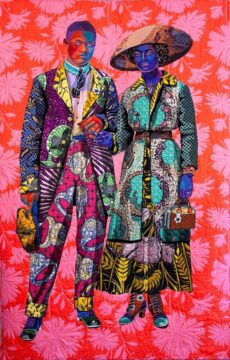 Brooklyn-based artist Bisa Butler creates contemporary quilts that are life-sized historical portraits of Black people whose stories may have been forgotten or completely overlooked in history. Each colorful picture utilizes fabric like a painter would pigment to produce regal representations of each person. Butler learned how to sew by watching her mother and grandmother. When she first began creating her quilt art, she depicted her family. Now, she scours public databases for photographs that inspire her.
Brooklyn-based artist Bisa Butler creates contemporary quilts that are life-sized historical portraits of Black people whose stories may have been forgotten or completely overlooked in history. Each colorful picture utilizes fabric like a painter would pigment to produce regal representations of each person. Butler learned how to sew by watching her mother and grandmother. When she first began creating her quilt art, she depicted her family. Now, she scours public databases for photographs that inspire her.
“My community has been marginalized for hundreds of years,” she writes in her artist statement. “While we have been right beside our white counterparts experiencing and creating history, our contributions and perspectives have been ignored, unrecorded, and lost. It is only a few years ago that it was acknowledged that the White House was built by slaves. Right there in the seat of power of our country African Americans were creating and contributing while their names were lost to history.
“My subjects are African Americans from ordinary walks of life who may have sat for a formal family portrait or may have been documented by a passing photographer,” Butler explains. “Like the builders of the White House, they have no names or captions to tell us who they were.”
More here. (Note: In honor of Black History Month, at least one post will be devoted to its 2024 theme of “African Americans and the Arts” throughout the month of February)

 Elizabeth Amelia Gloucester appeared in the census for the final time on June 8, 1880. The census enumerators who crisscrossed Brooklyn Heights were no doubt surprised to find a wealthy Black woman presiding over Remsen House, the grand boarding hotel not far from Brooklyn City Hall that served the white professional classes. Ms. Gloucester was a pillar of the
Elizabeth Amelia Gloucester appeared in the census for the final time on June 8, 1880. The census enumerators who crisscrossed Brooklyn Heights were no doubt surprised to find a wealthy Black woman presiding over Remsen House, the grand boarding hotel not far from Brooklyn City Hall that served the white professional classes. Ms. Gloucester was a pillar of the  Since its inception with the
Since its inception with the  Instruments deployed in the ocean starting in 2004
Instruments deployed in the ocean starting in 2004  THE CANARY ISLANDS—
THE CANARY ISLANDS— In an anonymously published essay, “Silly Novels by Lady Novelists,” George Eliot set out her objections to “mind-and-millinery” novels: those books featuring dazzling heroines—eloquent, accomplished, almost godly—who set off into the world solely in pursuit of an amiable husband. Castigating the genre for its “drivelling” narratives, clichéd characters, and hackneyed morals, Eliot argued that novels that posit marriage as a woman’s ultimate aim and achievement only “confirm the popular prejudice against the more solid education of women.” In her own writing, Eliot set out not just to rehash the “marriage plot” but to expose and dissect it: Her sweeping novels show her utterly human characters grappling with the harsh disparities between societal expectations of married life and their own, often painful experiences of it.
In an anonymously published essay, “Silly Novels by Lady Novelists,” George Eliot set out her objections to “mind-and-millinery” novels: those books featuring dazzling heroines—eloquent, accomplished, almost godly—who set off into the world solely in pursuit of an amiable husband. Castigating the genre for its “drivelling” narratives, clichéd characters, and hackneyed morals, Eliot argued that novels that posit marriage as a woman’s ultimate aim and achievement only “confirm the popular prejudice against the more solid education of women.” In her own writing, Eliot set out not just to rehash the “marriage plot” but to expose and dissect it: Her sweeping novels show her utterly human characters grappling with the harsh disparities between societal expectations of married life and their own, often painful experiences of it. ALMOST IMMEDIATELY after melodrama had its heyday in the mid-19th century, it began to be mocked for being obsolete. In an 1890 burlesque of Victorien Sardou’s La Tosca, the play later adapted into a more famous opera, the police chief Scarpia proudly admits that, as a villain intent on “possess[ing]” the play’s titular heroine, he is a vestige of “that dark age / when curdling melodrama held the stage.” Belonging to a genre that has come to feel more campy than poignant, even villains like Scarpia can’t take themselves seriously. And yet, no matter how many generations have claimed to have evolved away from a genre besmirched for its expressive storytelling and moral polarities, melodrama has retained its power as a way for artists to represent the world and as a lens for critics to interpret what they see.
ALMOST IMMEDIATELY after melodrama had its heyday in the mid-19th century, it began to be mocked for being obsolete. In an 1890 burlesque of Victorien Sardou’s La Tosca, the play later adapted into a more famous opera, the police chief Scarpia proudly admits that, as a villain intent on “possess[ing]” the play’s titular heroine, he is a vestige of “that dark age / when curdling melodrama held the stage.” Belonging to a genre that has come to feel more campy than poignant, even villains like Scarpia can’t take themselves seriously. And yet, no matter how many generations have claimed to have evolved away from a genre besmirched for its expressive storytelling and moral polarities, melodrama has retained its power as a way for artists to represent the world and as a lens for critics to interpret what they see. In antiquity humans were referred to as “mortals,” which meant that they were destined not only to die but also to suffer loss, misfortune, and disaster. By comparison with the immortal gods, even the loftiest mortals are losers in the long run (as Achilles realizes in Hades). In his book In Praise of Failure, the philosopher and essayist Costica Bradatan reminds us that we flash into existence between “two instantiations of nothingness,” namely the nothingness before we were born and the one after we die. Each one of us, ontologically speaking, is next to nothing. And each one of us, despite our precarious condition, has something to lose. “Myths, religion, spirituality, philosophy, science, works of art and literature”—all, according to Bradatan, seek to make our next-to-nothingness “a little more bearable.”
In antiquity humans were referred to as “mortals,” which meant that they were destined not only to die but also to suffer loss, misfortune, and disaster. By comparison with the immortal gods, even the loftiest mortals are losers in the long run (as Achilles realizes in Hades). In his book In Praise of Failure, the philosopher and essayist Costica Bradatan reminds us that we flash into existence between “two instantiations of nothingness,” namely the nothingness before we were born and the one after we die. Each one of us, ontologically speaking, is next to nothing. And each one of us, despite our precarious condition, has something to lose. “Myths, religion, spirituality, philosophy, science, works of art and literature”—all, according to Bradatan, seek to make our next-to-nothingness “a little more bearable.”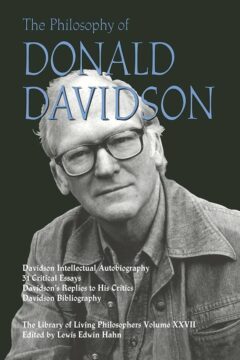 Decades ago, I argued that indeterminacy of interpretation, construed in the terminology of Husserl’s phenomenology and Saussure’s conception of language, was very close to Derrida’s “deconstruction.” I have come to see that the very structure of Davidson’s account of language commits him to a version of “dissemination,” the fluidity and “play” of ascriptions of meaning. The core of Davidson’s account of language and interpretation guarantees that natural languages will be disseminative.
Decades ago, I argued that indeterminacy of interpretation, construed in the terminology of Husserl’s phenomenology and Saussure’s conception of language, was very close to Derrida’s “deconstruction.” I have come to see that the very structure of Davidson’s account of language commits him to a version of “dissemination,” the fluidity and “play” of ascriptions of meaning. The core of Davidson’s account of language and interpretation guarantees that natural languages will be disseminative.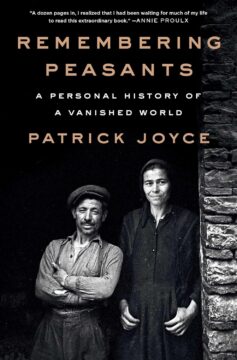 Don’t impress me with peasant virtues, said Chekhov, I have peasant blood in my veins. Patrick Joyce has the blood too. His people won a living from the hard lands of Dúiche Seoighe, or Joyce Country, which stretch from Loughs Corrib and Mask to the Atlantic Ocean and straddle the border of County Mayo and County Galway. Although his father took the family to England in 1930, he brought his sons back every year and they would fall asleep night after night listening to kitchen talk in English and Irish. Joyce knows what he is talking about, and if his peasants are not always virtuous, they are at least vivid and real.
Don’t impress me with peasant virtues, said Chekhov, I have peasant blood in my veins. Patrick Joyce has the blood too. His people won a living from the hard lands of Dúiche Seoighe, or Joyce Country, which stretch from Loughs Corrib and Mask to the Atlantic Ocean and straddle the border of County Mayo and County Galway. Although his father took the family to England in 1930, he brought his sons back every year and they would fall asleep night after night listening to kitchen talk in English and Irish. Joyce knows what he is talking about, and if his peasants are not always virtuous, they are at least vivid and real.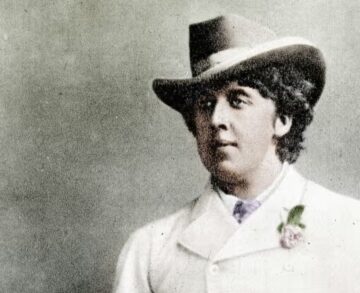 There is a well-known passage in
There is a well-known passage in  A new tech ideology is ascendant online. “Introducing effective accelerationism,” the pseudonymous user Beff Jezos tweeted, rather grandly, in May 2022. “E/acc” — pronounced ee-ack — “is a direct product [of the] tech Twitter schizosphere,” he wrote. “We hope you join us in this new endeavour.”
A new tech ideology is ascendant online. “Introducing effective accelerationism,” the pseudonymous user Beff Jezos tweeted, rather grandly, in May 2022. “E/acc” — pronounced ee-ack — “is a direct product [of the] tech Twitter schizosphere,” he wrote. “We hope you join us in this new endeavour.”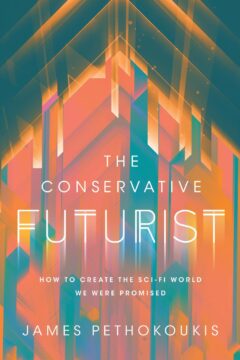 From John Maynard Keynes’s prediction of a fifteen-hour workweek to Walt Disney’s Tomorrowland to 2001: A Space Odyssey’s interplanetary waltzing, many futurists and crystal-ball seers of the twentieth century assured us that, thanks to the wonders of technology, things were looking up for the human race. And remarkably, they were often justified in their buoyancy: President Kennedy explained in 1962 why we chose to go to the Moon, and seven years later there we were. Surely the 2000s would be a whole century of roaring twenties.
From John Maynard Keynes’s prediction of a fifteen-hour workweek to Walt Disney’s Tomorrowland to 2001: A Space Odyssey’s interplanetary waltzing, many futurists and crystal-ball seers of the twentieth century assured us that, thanks to the wonders of technology, things were looking up for the human race. And remarkably, they were often justified in their buoyancy: President Kennedy explained in 1962 why we chose to go to the Moon, and seven years later there we were. Surely the 2000s would be a whole century of roaring twenties.